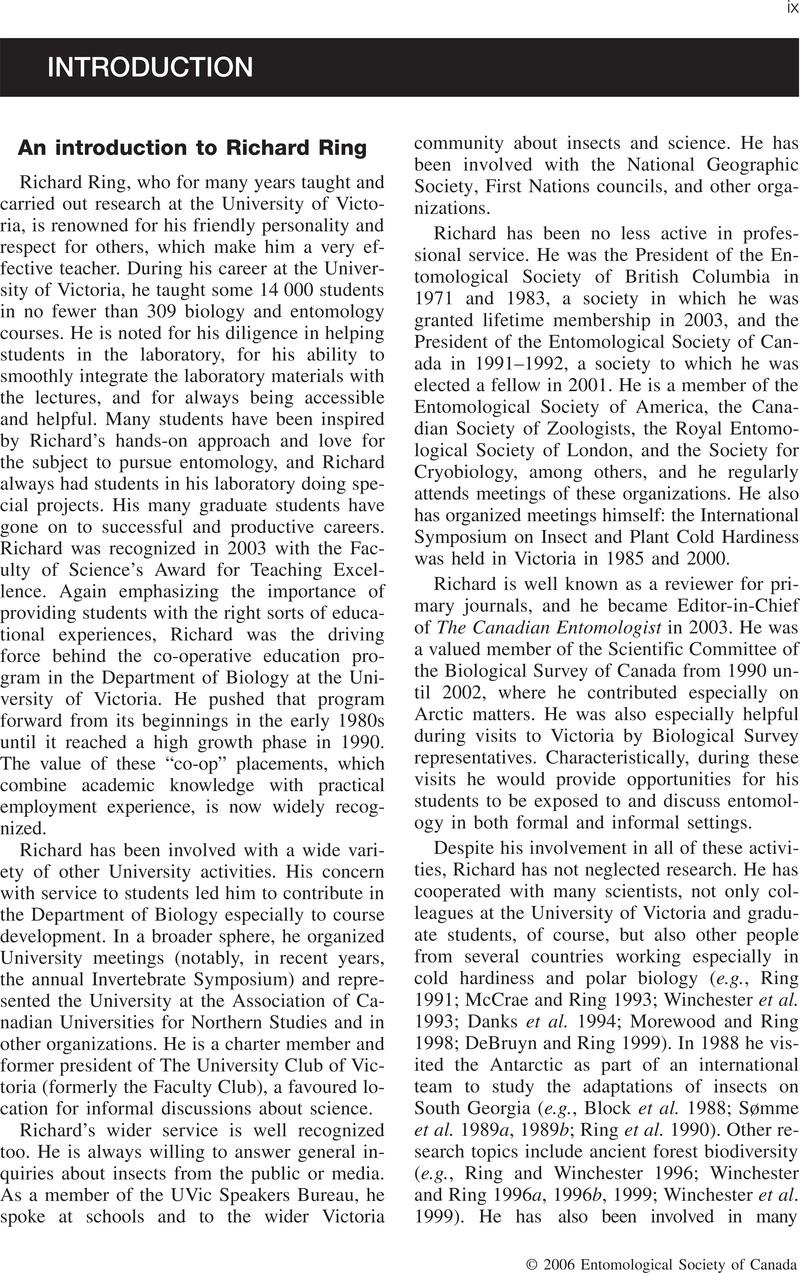Ring, R.A. 1991. The insect fauna and some other characteristics of natural salt springs on Saltspring Island, British Columbia.
In Arthropods of springs, with particular reference to Canada.
Edited by Williams, D.D. and
Danks, H.V..
Memoirs of the Entomological Society of Canada,
155:
51–
61.
Google Scholar 